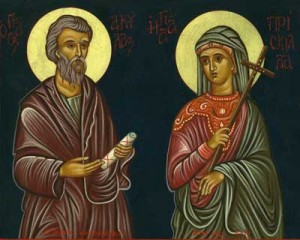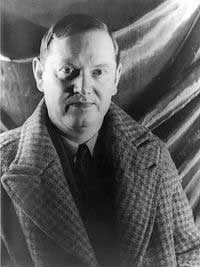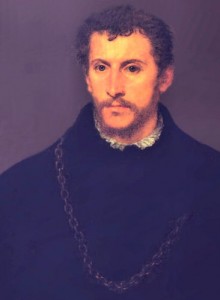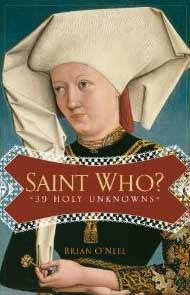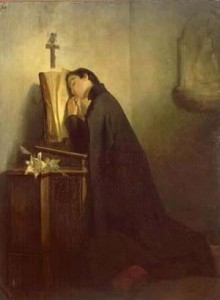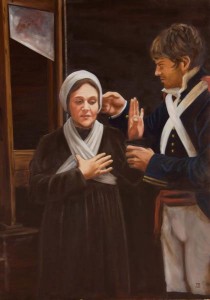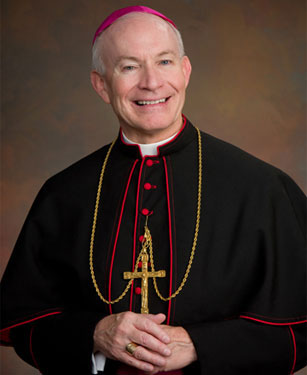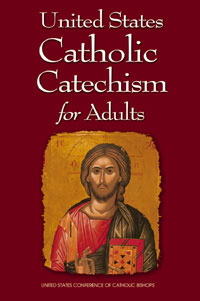.
Priscilla and Aquila
Dear Brothers and Sisters,
Taking a new step in this type of portrait gallery of the first witnesses of the Christian faith which we began some weeks ago, today we take into consideration a married couple.
The couple in question are Priscilla and Aquila, who take their place, as we already mentioned briefly last Wednesday, in the sphere of numerous collaborators who gravitated around the Apostle Paul. Based on the information in our possession, this married couple played a very active role in the post-Paschal origins of the Church.
The names Aquila and Priscilla are Latin, but the man and woman who bear them were of Hebrew origin. At least Aquila, however, geographically came from the diaspora of northern Anatolia, which faces the Black Sea – in today’s Turkey -, while Priscilla was probably a Jewish woman from Rome (cf. Acts 18: 2).
However, it was from Rome that they reached Corinth, where Paul met them at the beginning of the 50s. There he became associated with them, as Luke tells us, practicing the same trade of making tents or large draperies for domestic use, and he was even welcomed into their home (cf. Acts 18: 3).
The reason they came to Corinth was the decision taken by the Emperor Claudius to expel from Rome the city’s Jewish residents. Concerning this event the Roman historian Suetonius tells us that the Hebrews were expelled because “they were rioting due to someone named Chrestus” (cf. “The Lives of the Twelve Caesars, Claudius”, n. 25).
One sees that he did not know the name well – instead of Christ he wrote “Chrestus” – and he had only a very confused idea of what had happened. In any case, there were internal discords within the Jewish community about the question if Jesus was the Christ. And for the Emperor these problems were the reason to simply expel all Jews from Rome.
One can deduce that the couple had already embraced the Christian faith in the 40s, and now they had found in Paul someone who not only shared with them this faith – that Jesus is the Christ – but who was also an Apostle, personally called by the Risen Lord.
Therefore, their first encounter is at Corinth, where they welcomed him into their house and worked together making tents.
In a second moment they transferred to Ephesus in Asia Minor. There they had a decisive role in completing the Christian formation of the Alexandrian Jew Apollo, who we spoke about last Wednesday.
Since he only knew the faith superficially, “Priscilla and Aquila… took him and expounded to him the way of God more accurately” (Acts 18: 26).
When Paul wrote the First Letter to the Corinthians from Ephesus, together with his own greeting he explicitly sent those of “Aquila and Prisca, together with the church in their house” (16: 19).
Hence, we come to know the most important role that this couple played in the environment of the primitive Church: that of welcoming in their own house the group of local Christians when they gathered to listen to the Word of God and to celebrate the Eucharist. It is exactly this type of gathering that in Greek is called “ekklesìa” – the Latin word is “ecclesia”, the Italian “chiesa” – which means convocation, assembly, gathering.
In the house of Aquila and Priscilla, therefore, the Church gathered, the convocation of Christ, which celebrates here the Sacred Mysteries.
Thus, we can see the very birth of the reality of the Church in the homes of believers. Christians, in fact, from the first part of the third century did not have their own places of worship. Initially it was the Jewish Synagogue, until the original symbiosis between the Old and New Testaments dissolved and the Church of the Gentiles was forced to give itself its own identity, always profoundly rooted in the Old Testament.
Then, after this “break”, they gathered in the homes of Christians that thus become “Church”. And finally, in the third century, true and proper buildings for Christian worship were born.
But here, in the first half of the first century and in the second century, the homes of Christians become a true and proper “Church”. As I said, together they read the Sacred Scripture and celebrate the Eucharist.
That was what used to happen, for example, at Corinth, where Paul mentioned a certain “Gaius, who is host to me and to the whole church” (Rom 16: 23), or at Laodicea, where the community gathered in the home of a certain Nympha (cf. Col 4: 15), or at Colossae, where the meeting took place in the house of a certain Archippus (cf. Phlm 2).
Having returned subsequently to Rome, Aquila and Priscilla continue to carry out this precious function also in the capital of the Empire.
In fact, Paul, writing to the Romans, sends this precise greeting: “Greet Prisca and Aquila, my fellow workers in Christ Jesus, who risked their necks for my life, to whom not only I but also all the churches of the Gentiles give thanks; greet also the church in their house” (Rom 16: 3-5).
What extraordinary praise for these two married persons in these words! And it is none other than Paul who extends it. He explicitly recognizes in them two true and important collaborators of his apostolate. (more…)
Tags: catholic, catholic podcast, catholic prayer, cathollc spirituality
This entry was posted on Sunday, July 8th, 2012 at 12:01 am
You can follow any responses to this entry through the RSS 2.0 feed.
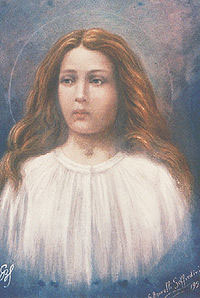
 MESSAGE OF JOHN PAUL II TO THE BISHOP OF ALBANO FOR THE CENTENARY OF THE DEATH OF ST. MARIA GORETTI from Vatican.va
MESSAGE OF JOHN PAUL II TO THE BISHOP OF ALBANO FOR THE CENTENARY OF THE DEATH OF ST. MARIA GORETTI from Vatican.va
To my Venerable Brother Bishop Agostino Vallini of Albano
1. A hundred years ago, on 6 July 1902, Maria Goretti died in the hospital at Nettuno, brutally stabbed the day before in the little village of Le Ferriere, in the Pontine Marshes. Her spiritual life, the strength of her faith, her ability to forgive her murderer have placed her among the best-loved saints of the 20th century. Appropriately, therefore, the Congregation of the Passion (C.P.), entrusted with the care of the shrine where the saint’s remains repose, wanted to celebrate the anniversary with special solemnity.
St Maria Goretti was a girl whom God’s Spirit endowed with the courage to stay faithful to her Christian vocation even to the point of making the supreme sacrifice of her life. Her tender age, her lack of education and the poverty of the environment in which she lived did not prevent grace from working its miracles in her. Indeed, it was precisely in these conditions that God’s special love for the lowly appeared. We are reminded of the words with which Jesus blesses the heavenly Father for revealing himself to children and the simple, rather than to the wise and learned of the world (cf. Mt 11,25).
It was rightly observed that St Maria Goretti’s martyrdom heralded what was to be known as the century of martyrs. It was in this perspective that at the end of the Great Jubilee of the Year 2000, I stressed that “this lively sense of repentance … has not prevented us from giving glory to the Lord for what he has done in every century, and in particular during the century which we have just left behind, by granting his Church a great host of saints and martyrs” (Novo Millennio ineunte, n. 7).
2. Maria Goretti, born in Corinaldo in The Marches on 16 October 1890, was soon obliged to emigrate with her family, and after sometime they arrived at Le Ferriere di Conca in the Pontine Marshes. Despite the hardships of poverty which even prevented her from going to school, little Maria lived in a serene and united family atmosphere, enlivened by Christian faith, in which the children felt welcomed as a gift and were taught by their parents self-respect and respect for others, as well as a sense of duty based on love of God. This enabled the little girl to grow up peacefully, nourishing her simple but deep faith. The Church has always recognized the role of the family as the first and fundamental place for the sanctification of its members, starting with the children.
In this family environment Maria assimilated steadfast trust in God’s provident love, which she showed in particular at the death of her father, who died of malaria. “Mother, be brave, God will help us”, the little girl was in the habit of saying in those difficult times, bravely reacting to her deep feeling of loss at her father’s death.
3. In the homily for her canonization, Pope Pius XII of venerable memory pointed to Maria Goretti as “the sweet little martyr of purity” (cf. Discorsi e Radiomessaggi, XII [1950-1951], 121), because she did not break God’s commandment in spite of being threatened by death.
What a shining example for young people! The non-commital mindset of much of our society and culture today sometimes has a struggle to understand the beauty and value of chastity. A high and noble perception of dignity, her own and that of others emerges from the behaviour of this young saint, was mirrored in her daily choices, giving them the fullness of human meaning. Is not there a very timely lesson in this? In a culture that idolizes the physical aspect of the relations between a man and a woman, the Church continues to defend and to champion the value of sexuality as a factor that involves every aspect of the person and must therefore be lived with an interior attitude of freedom and reciprocal respect, in the light of God’s original plan. With this outlook, a person discovers he or she is being given a gift and is called, in turn, to be a gift to the other. (more…)
Tags: catholic, catholic podcast, catholic prayer, cathollc spirituality, Church, forgiveness, Le Ferriere, Maria Goretti, pope john paul ii, saints, st. maria goretti
This entry was posted on Friday, July 6th, 2012 at 12:07 am
You can follow any responses to this entry through the RSS 2.0 feed.
I love the writing of Evelyn Waugh…his prose are some of the best of our time, if not of all time.  And when that talent is used to pen a biography of the heroic English martyr, Edmund Campion, a tremendous blessing has been given to all who gleen it’s pages.  What a story…what a life.  We are joined once again by the wonderful Vivian Dudro to discuss this incredible work, as well as the life and times of this great saint.
[powerpress]
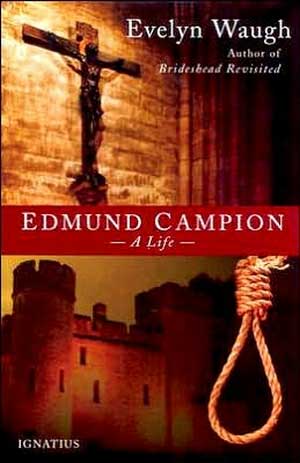 You can find the book here
You can find the book here
From the description:
Evelyn Waugh presented his biography of St. Edmund Campion, the Elizabethan poet, scholar and gentleman who became the haunted, trapped and murdered priest as “a simple, perfectly true story of heroism and holiness.â€
But it is written with a novelist’s eye for the telling incident and with all the elegance and feeling of a master of English prose. From the years of
success as an Oxford scholar, to entry into the newly founded Society of Jesus and a professorship in Prague, Campion’s life was an inexorable progress towards the doomed mission to England. There followed pursuit, betrayal, a spirited defense of loyalty to the Queen, and a horrifying martyr’s death at Tyburn.
Tags: catholic, catholic podcast, catholic prayer, cathollc spirituality, edmund campion, english martyrs, english reformation, Evelyn Waugh, holiness, ignatius press, mission
This entry was posted on Monday, July 2nd, 2012 at 12:47 pm
You can follow any responses to this entry through the RSS 2.0 feed.
Join Bruce and I as we discuss with Mike Aquilina the powerful and at the same time, poignant witness of the Holy Roman 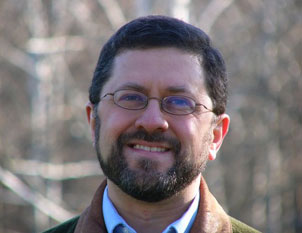 Martyrs[powerpress]
Martyrs[powerpress]
From Mike’s great website The Way of the Matyrs: ROMAN PROTOMARTYRS
Monday June 30th 2008, 10:23 am
Filed under: PatristicsToday’s the feast of the first Roman Martyrs. Theirs is a story you just have to hear. But first we have to backtrack a little bit.
In July of A.D. 64, during the tenth year of Nero’s reign, a great fire consumed much of the city of Rome. The fire raged out of control for seven days — and then it started again, mysteriously, a day later. Many in Rome knew that Nero had been eager to do some urban redevelopment. He had a plan that included an opulent golden palace for himself. The problem was that so many buildings were standing in his way — many of them teeming wooden tenements housing Rome’s poor and working class.
The fire seemed too convenient for Nero’s purposes — and his delight in watching the blaze didn’t relieve anybody’s suspicions. If he didn’t exactly fiddle while Rome burned, he at least recited his poems. Nero needed a scapegoat, and an upstart religious cult, Jewish in origin and with foreign associations, served his purposes well. Nero, who was a perverse expert at human torment, had some of its members tortured till they were so mad they would confess to any crime. Once they had confessed, he had others arrested.
He must have known, however, that the charges would not hold up. So he condemned them not for arson, or treason, or conspiracy, but for “hatred of humanity.â€
To amuse the people, he arranged for their execution to be a spectacle, entertainment on a grand scale. The Roman historian Tacitus (who had contempt for the religion, but greater contempt for Nero) describes in gruesome detail the tortures that took place amid a party in Nero’s gardens.
Mockery of every sort was added to their deaths. Covered with the skins of beasts, they were torn by dogs and perished, or were nailed to crosses, or were doomed to the flames. These served to illuminate the night when daylight failed. Nero had thrown open the gardens for the spectacle, and was exhibiting a show in the circus, while he mingled with the people in the dress of a charioteer or drove about in a chariot. Hence, even for criminals who deserved extreme and exemplary punishment there arose a feeling of compassion; for it was not, as it seemed, for the public good, but to glut one man’s cruelty, that they were being punished.
That is all we know about the first Roman martyrs. We know none of their names. Tacitus doesn’t tell us why they were willing to die this way rather than renounce their faith. Yet this should be an important question for us to consider. Why did the martyrs do this? What prepared them to face death so bravely? To what exactly did they bear witness with their death?
The answers to these questions (and many more) can be found in the rest of the article, at the archive of Touchstone Magazine. The article originated in a talk I gave in Rome in 2005 on the feast of the Roman Martyrs. It’s called “The Roman Martyrs and Their Mass.â€
I also treat the subject in my book The Resilient Church: The Glory, the Shame, & the Hope for Tomorrow.
Tags: catholic, catholic podcast, catholic prayer, cathollc spirituality, Holy Roman Martyrs, martyrdom, martyrs, mike aquilina, Roman Martyrs, rome
This entry was posted on Saturday, June 30th, 2012 at 10:47 am
You can follow any responses to this entry through the RSS 2.0 feed.
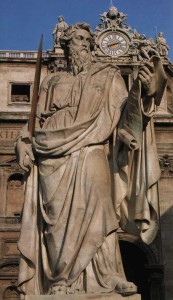
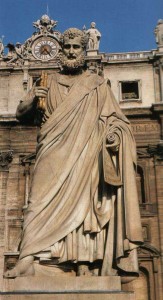 This is a FANTASTIC summation of the lives of Peter and Paul in the life of the early Church by Vatican Radio…don’t miss it!
This is a FANTASTIC summation of the lives of Peter and Paul in the life of the early Church by Vatican Radio…don’t miss it!
Why Peter and Paul ?
Wherever you go in Rome you always see Saint Peter and Saint Paul linked together.
Their feast day too is celebrated on the same day . Shouldn’t they each have their own feast day?
The irony is that they fought mightily in their lifetime and not just about trivial things but about matters that went to the very heart of what Christianity is all about.
Listen to Scripture scholar Mark Benedict Coleridge , Archbishop of Canberra and
Goulburn:[powerpress = “Vatican-Radio”]
Tags: acts of the apostles, apostles, catholic, catholic podcast, catholic prayer, cathollc spirituality, early church, martyr, martyrdom, Peter and Paul, Saint Peter, st peter, st. paul, sts. peter and paul, vatican radio
This entry was posted on Friday, June 29th, 2012 at 5:57 am
You can follow any responses to this entry through the RSS 2.0 feed.
From the Vatican.va archives June 24, 2007:
Today, 24 June, the liturgy invites us to celebrate the Solemnity of the Birth of St John the Baptist, whose life was totally directed to Christ, as was that of Mary, Christ’s Mother.
John the Baptist was the forerunner, the “voice” sent to proclaim the Incarnate Word. Thus, commemorating his birth actually means celebrating Christ, the fulfilment of the promises of all the prophets, among whom the greatest was the Baptist, called to “prepare the way” for the Messiah (cf. Mt 11: 9-10).
All the Gospels introduce the narrative of Jesus’ public life with the account of his baptism by John in the River Jordan. St Luke frames the Baptist’s entrance on the scene in a solemn historical setting.
My book Jesus of Nazareth also begins with the Baptism of Jesus in the Jordan, an event which had enormous echoes in his day. People flocked from Jerusalem and every part of Judea to listen to John the Baptist and have themselves baptized in the river by him, confessing their sins (cf. Mk 1: 5).
The baptizing prophet became so famous that many asked themselves whether he was the Messiah. The Evangelist, however, specifically denied this: “I am not the Christ” (Jn 1: 20).Nevertheless, he was the first “witness” of Jesus, having received instructions from Heaven: “He on whom you see the Spirit descend and remain, this is he who baptizes with the Holy Spirit” (Jn 1: 33).
This happened precisely when Jesus, after receiving baptism, emerged from the water: John saw the Spirit descending upon him in the form of a dove. It was then that he “knew” the full reality of Jesus of Nazareth and began to make him “known to Israel” (Jn 1: 31), pointing him out as the Son of God and Redeemer of man: “Behold, the Lamb of God, who takes away the sin of the world!” (Jn 1: 29).As an authentic prophet, John bore witness to the truth without compromise. He denounced transgressions of God’s commandments, even when it was the powerful who were responsible for them. Thus, when he accused Herod and Herodias of adultery, he paid with his life, sealing with martyrdom his service to Christ who is Truth in person.
Let us invoke his intercession, together with that of Mary Most Holy, so that also in our day the Church will remain ever faithful to Christ and courageously witness to his truth and his love for all.
Tags: catholic, catholic podcast, catholic prayer, cathollc spirituality, john the baptist, pope benedict xvi
This entry was posted on Sunday, June 24th, 2012 at 7:23 am
You can follow any responses to this entry through the RSS 2.0 feed.
We love to hear the stories of the lives of the saints, especially those we are not familiar with! Â So we owe a big thank you to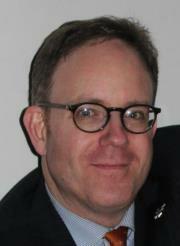
Brian O’Neel for shining the light on 39 holy unknowns in “Saint Who?”. Â Â Men and women, clerics, religious, and laity, married and single, there’s story from all walks of life. Â The book contains a short biography of each saint, a section on why that saint merits our attention and devotion today, and a short prayer. Â He also discusses with us what makes a blessed, what makes them a saint. Â A wonderful read.
[powerpress]
You can find the book here
Thousands of saints are formally recognized by the Catholic Church. While some are household names, have you heard of:
- St. Bathilde, the slave queen?
- St. Pietro Parenzo, the heavenly politician?
- Bl. Sebastian de Aparicio, the first cowboy?
- St. Mary Helen MacKillop, the excommunicated saint?
From these now-obscure saints or blesseds come amazing stories of virtue, vice, and the triumph of grace. Brian O’Neel tells these tales, often colorful and always compelling, with humor tempered by an obvious love for his subjects, explaining why they deserve our attention and devotion.
Tags: catholic, catholic podcast, catholic prayer, cathollc spirituality, saints
This entry was posted on Saturday, June 23rd, 2012 at 6:23 am
You can follow any responses to this entry through the RSS 2.0 feed.
Who is Aloysius Gonzaga?
I didn’t know anything about him until I traveled to Rome and visited the Church of St. Igantius of Loyola. Â I encountered this beautiful altar dedicated to this young saint who died at the age of 23. Â I wanted to learn about this youth who was so highly venerated by the Society of Jesus, who even someone as great as St. Robert Bellarmine wanted to be buried near. His story is poignant and a strong witness to the power of grace, no wonder they love him so.
from Gonzaga.edu
Aloysius is the Latin form of Gonzaga’s given name, Luigi. In English, the equivalent form would be Louis. The Gonzaga name is well known in Italy. Aloysius Gonzaga was born at Castiglione near Mantua, Italy, in 1568 to a celebrated family of wealth and prestige. As the first born son of his father, Ferrante, and his mother, Marta, he was in line to inherit his father’s title of Marquis. He grew up amid the violence and brutality of the Renaissance Italy and witnessed the murder of two of his brothers. In 1576, Aloysius’ parents sent him to attend the court of the Grand Duke of Tuscany, Francesco de’Medici, in Florence. Later, accompanied by his parents, he traveled to Spain to join the court of Philip II in Madrid.
In Spain, Aloysius decided he wanted to join the newly founded religious order, The Society of Jesus. His father resisted his decision and there followed a struggle of wills that continued after his return to Castiglione in 1584. But Aloysius eventually prevailed.
Renouncing his right to the title of Marquis and to the vast wealth he was destined to inherit, he entered the Society of Jesus in Rome on November 25, 1585. Â During his early studies in Rome, he would regularly go out into the streets of the city to care for victims of the plague. He himself contracted the disease as a result of his efforts for the suffering
and died on June 21, 1591, at the age of twenty-three, six years short of his ordination as a Jesuit priest.
Even before his time as a Jesuit, Aloysius was known for his love of prayer and fasting. He received his First Communion from St. Charles Borromeo. As a Jesuit at the Roman College, he continued to devote his time to prayer and practices of austerity. His spiritual director was Robert Bellarmine who later was canonized and declared a doctor of the church. When Robert was dying, he asked to be buried next to the grave of Aloysius. Today, they rest next to each other in the church of St. Ignatius Loyola in Rome. Pope Benedict XIII canonized Aloysius in 1726, and three years later declared him to be the patron of youth in the Catholic Church, an honor later confirmed by Pope Pius XI in 1926.
Tags: Aloysius Gonzaga, catholic, catholic podcast, catholic prayer, cathollc spirituality, jesuits, Robert Bellarmine, society of jesus, st robert bellarmine, St. Aloysius Gonzaga, youth
This entry was posted on Thursday, June 21st, 2012 at 3:28 pm
You can follow any responses to this entry through the RSS 2.0 feed.
Beatification of Sister Marguerite Rutan,
June 19, 2011
From the Daughter of Charity of St. Vincent de Paul website:
“The lives of the saints are not limited to their earthly biographies but also include their being and working in God after death. In the saints one thing becomes clear: those who draw near to God do not withdraw from men, but rather become truly close to them.â€(Deus Caritas est 42).
In February 2011 we published a short article on Sister Marguerite Rutan, Daughter of Charity and martyr (see www.filles-de-la-charite.org/en/news). As her beatification approaches we invite you to learn more about her life. Who is this new example of Vincentian holiness?
A presentation of her life:
Marguerite Rutan was born on 23 April 1736 in Metz in Lorraine and was baptized the same day. Marguerite was the 8th of 15 children. Marie Forat, her mother, was very Christian and her father, Charles Gaspard Rutan was an honest and courageous workman. With them she learned to live her life as a gift from God.
Her father introduced her to mathematics and linear design. Soon she was able to keep the accounts of his business. She helped with all her family until she was 21 years old.
She had the profound conviction she was being called by Jesus. With Him she looked for a way to give herself to the service of those who were poor.
In 1756, Marguerite Rutan entered the Company of the Daughters of Charity to be near those who were suffering, marginalized or excluded. She wanted to serve them. Following Christ she encouraged charity in those around her. For over 20 years she placed everything she received from God and others at the service of the poorest of the poor, no matter where she was sent by her superiors.
In 1779 she was sent to serve in the Hospital of Dax. Sr. Marguerite and her Sisters worked for 10 years relating with the townspeople. The Sisters were admired and respected.
In 1789 the troubling period of the Revolution began. It profoundly changed the country and personally touched Sr. Marguerite with suffering and death (April 9, 1794). Her faithfulness to Christ and the Church lead her to martyrdom. The life of Sr. Marguerite was anchored in the person of Christ and his Word. Each day she profoundly encountered the love of Christ which drew her to serve as He served.
Following Christ, servant of her brothers and sisters, kneeling to wash their feet, Sr. Marguerite gave her life to serve the poor and the sick and building brotherhood with all.
Following Christ, servant of the will of the Father, Sr. Marguerite based her life on the Gospel, desiring only one thing: to do the will of God.
Following Christ, servant of the suffering, despised, persecuted, Sr. Marguerite abandoned herself totoally to God. During the revolutionary turmoil, she showed the extremity of her love.
Interesting links:
Marguerite Rutan: A little history of her life
Tags: Blessed Marguerite Rutan, catholic, catholic podcast, catholic prayer, cathollc spirituality, daughters of charity, france, french revolution, Marguerite Rutan, martyr, martyrdom, Sister Marguerite Rutan
This entry was posted on Thursday, June 21st, 2012 at 1:16 pm
You can follow any responses to this entry through the RSS 2.0 feed.
Episode 16 – Seeking Truth with Sharon Doran, hosted by Bruce McGregor on his KVSS Â program “The Ninth Hour”. Â Ep 16 – The Virginity of the The Blessed Virgin Mary,
[powerpress]
Sharon Doran serves as the teaching director of “Seeking Truth.†An experienced Bible Study teacher, Sharon has a passion forscripture that will motivate and challenge you to immerse yourself in God’s Word and apply His message to your every day life.
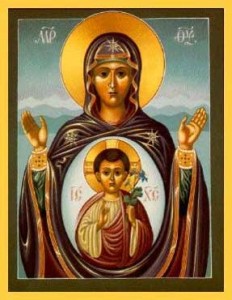 Episode 16 – Sharon and Bruce discuss the perpetual virginity of the Blessed Virgin Mary.  How is this possible? What is the significance of Mary’s silence after the annunciation? Why is the Virgin Birth so important?What do the Church Fathers have to say about this?  Where is all this found in Sacred Scripture?
Episode 16 – Sharon and Bruce discuss the perpetual virginity of the Blessed Virgin Mary.  How is this possible? What is the significance of Mary’s silence after the annunciation? Why is the Virgin Birth so important?What do the Church Fathers have to say about this?  Where is all this found in Sacred Scripture?
 “Seeking Truth†is an in depth Catholic Bible Study, commissioned by the Archdiocese of Omaha in response to John Paul II’s call to the New Evangelization as well as Pope Benedict XVI’s exhortation for all Catholics to study scripture. To learn more go to:www.seekingtruth.net
“Seeking Truth†is an in depth Catholic Bible Study, commissioned by the Archdiocese of Omaha in response to John Paul II’s call to the New Evangelization as well as Pope Benedict XVI’s exhortation for all Catholics to study scripture. To learn more go to:www.seekingtruth.net
Tags: blessed virgin mary, catholic, catholic podcast, catholic prayer, cathollc spirituality, church fathers, perpetual virginity, sacred scripture, Virgin Birth, virginity
This entry was posted on Wednesday, June 20th, 2012 at 3:48 am
You can follow any responses to this entry through the RSS 2.0 feed.
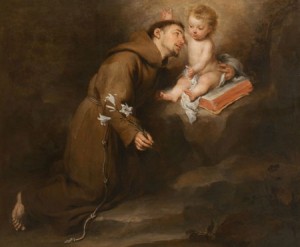
Saint Anthony of Padua from vatican.va
Dear Brothers and Sisters,
Two weeks ago I presented St Francis of Assisi. This morning I would like to speak of another saint who belonged to the first generation of the Friars Minor: Anthony of Padua, or of Lisbon, as he is also called with reference to his native town. He is one of the most popular Saints in the whole Catholic Church, venerated not only in Padua, where a splendid Basilica has been built that contains his mortal remains, but also throughout the world. Dear to the faithful are the images and statues that portray him with the lily a symbol of his purity or with the Child Jesus in his arms, in memory of a miraculous apparition mentioned in several literary sources.
With his outstanding gifts of intelligence, balance, apostolic zeal and, primarily, mystic fervour, Anthony contributed significantly to the development of Franciscan spirituality.
He was born into a noble family in Lisbon in about 1195 and was baptized with the name of Fernando. He entered the Canons who followed the monastic Rule of St Augustine, first at St Vincent’s Monastery in Lisbon and later at that of the Holy Cross in Coimbra, a renowned cultural centre in Portugal. He dedicated himself with interest and solicitude to the study of the Bible and of the Church Fathers, acquiring the theological knowledge that was to bear fruit in his teaching and preaching activities. The event that represented a decisive turning point on his life happened in Coimbra. It was there, in 1220, that the relics were exposed of the first five Franciscan missionaries who had gone to 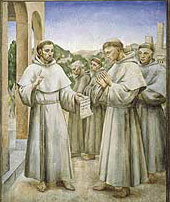 Morocco, where they had met with martyrdom. Their story inspired in young Fernando the desire to imitate them and to advance on the path of Christian perfection. Thus he asked to leave the Augustinian Canons to become a Friar Minor. His request was granted and, having taken the name of Anthony, he too set out for Morocco, but divine Providence disposed otherwise. After an illness he was obliged to return to Italy and, in 1221, participated in the famous “Chapter of the Mats” in Assisi, where he also met St Francis. He then lived for a period in complete concealment in a convent at Forlì in northern Italy, where the Lord called him to another mission. Invited, in somewhat casual circumstances, to preach on the occasion of a priestly ordination, he showed himself to be endowed with such knowledge and eloquence that the Superiors assigned him to preaching. Thus he embarked on apostolic work in Italy and France that was so intense and effective that it induced many people who had left the Church to retrace their footsteps. Anthony was also one of the first if not the first theology teachers of the Friars Minor. He began his teaching in Bologna with the blessing of St Francis who, recognizing Anthony’s virtues, sent him a short letter that began with these words: “I would like you to teach the brethren theology”. Anthony laid the foundations of Franciscan theology which, cultivated by other outstanding thinkers, was to reach its apex with St Bonaventure of Bagnoregio and Bl. Duns Scotus.
Morocco, where they had met with martyrdom. Their story inspired in young Fernando the desire to imitate them and to advance on the path of Christian perfection. Thus he asked to leave the Augustinian Canons to become a Friar Minor. His request was granted and, having taken the name of Anthony, he too set out for Morocco, but divine Providence disposed otherwise. After an illness he was obliged to return to Italy and, in 1221, participated in the famous “Chapter of the Mats” in Assisi, where he also met St Francis. He then lived for a period in complete concealment in a convent at Forlì in northern Italy, where the Lord called him to another mission. Invited, in somewhat casual circumstances, to preach on the occasion of a priestly ordination, he showed himself to be endowed with such knowledge and eloquence that the Superiors assigned him to preaching. Thus he embarked on apostolic work in Italy and France that was so intense and effective that it induced many people who had left the Church to retrace their footsteps. Anthony was also one of the first if not the first theology teachers of the Friars Minor. He began his teaching in Bologna with the blessing of St Francis who, recognizing Anthony’s virtues, sent him a short letter that began with these words: “I would like you to teach the brethren theology”. Anthony laid the foundations of Franciscan theology which, cultivated by other outstanding thinkers, was to reach its apex with St Bonaventure of Bagnoregio and Bl. Duns Scotus.
Having become Provincial Superior of the Friars Minor in northern Italy, he continued his ministry of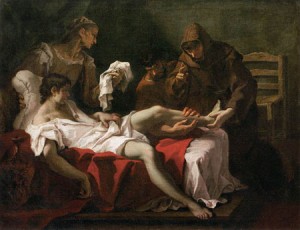 preaching, alternating it with his office of governance. When his term as Provincial came to an end, he withdrew to a place near Padua where he had stayed on various other occasions. Barely a year later, he died at the city gates on 13 June 1231. Padua, which had welcomed him with affection and veneration in his lifetime, has always accorded him honour and devotion. Pope Gregory IX himself, having heard him preach, described him as the “Ark of the Testament” and subsequent to miracles brought about through his intercession canonized him in 1232, only a year after his death.
preaching, alternating it with his office of governance. When his term as Provincial came to an end, he withdrew to a place near Padua where he had stayed on various other occasions. Barely a year later, he died at the city gates on 13 June 1231. Padua, which had welcomed him with affection and veneration in his lifetime, has always accorded him honour and devotion. Pope Gregory IX himself, having heard him preach, described him as the “Ark of the Testament” and subsequent to miracles brought about through his intercession canonized him in 1232, only a year after his death.
In the last period of his life, Anthony put in writing two cycles of “Sermons”, entitled respectively “Sunday Sermons” and “Sermons on the Saints” destined for the Franciscan Order’s preachers and teachers of theological studies. In these Sermons he commented on the texts of Scripture presented by the Liturgy, using the patristic and medieval interpretation of the four senses: the literal or historical, the allegorical or Christological, the tropological or moral, and the anagogical, which orients a person to eternal life. Today it has been rediscovered that these senses are dimensions of the one meaning of Sacred Scripture and that it is right to interpret Sacred Scripture by seeking the four dimensions of its words. St Anthony’s sermons are theological and homiletical texts that echo the live preaching in which Anthony proposes a true and proper itinerary of Christian life. The richness of spiritual teaching contained in the “Sermons” was so great that in 1946 Venerable Pope Pius XII proclaimed Anthony a Doctor of the Church, attributing to him the title “Doctor Evangelicus”, since the freshness and beauty of the Gospel emerge from these writings. We can still read them today with great spiritual profit.
In these Sermons St Anthony speaks of prayer as of a loving relationship that impels man to speak gently with the Lord, creating an ineffable joy that sweetly enfolds the soul in prayer. Anthony reminds us that prayer requires an atmosphere of silence, which does not mean distance from external noise but rather is an interior experience that aims to remove the distractions caused by a soul’s anxieties, thereby creating silence in the soul itself. According to this prominent Franciscan Doctor’s teaching, prayer is structured in four indispensable attitudes which in Anthony’s Latin are defined as obsecratio, oratio, postulatio, gratiarum actio. We might translate them in the following manner. The first step in prayer is confidently opening one’s heart to God; this is not merely accepting a word but opening one’s heart to God’s presence. Next, is speaking with him affectionately, seeing him present with oneself; then a very natural thing presenting our needs to him; and lastly, praising and thanking him.
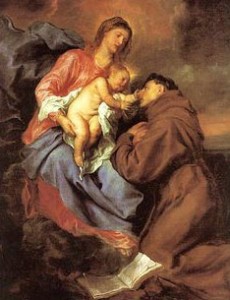 In St Anthony’s teaching on prayer we perceive one of the specific traits of the Franciscan theology that he founded: namely the role assigned to divine love which enters into the sphere of the affections, of the will and of the heart, and which is also the source from which flows a spiritual knowledge that surpasses all other knowledge. In fact, it is in loving that we come to know.
In St Anthony’s teaching on prayer we perceive one of the specific traits of the Franciscan theology that he founded: namely the role assigned to divine love which enters into the sphere of the affections, of the will and of the heart, and which is also the source from which flows a spiritual knowledge that surpasses all other knowledge. In fact, it is in loving that we come to know.
Anthony writes further: “Charity is the soul of faith, it gives it life; without love, faith dies” (Sermones Dominicales et Festivi II, Messagero, Padua 1979, p. 37).
Tags: Anthony of Padua, catholic, catholic podcast, catholic prayer, cathollc spirituality, doctor of the church, franciscan, franciscan priest, franciscan spirituality, pope benedict xvi, Saint Anthony of Padua, st anthony, st. anthony of padua
This entry was posted on Wednesday, June 13th, 2012 at 7:00 am
You can follow any responses to this entry through the RSS 2.0 feed.
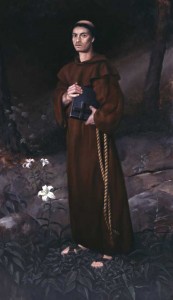 PRAYER TO ST ANTHONY TO FIND SOMETHING LOST
PRAYER TO ST ANTHONY TO FIND SOMETHING LOST
Glorious St Anthony, perfect imitator of Jesus, who received from God the special power of restoring lost things, grant that I may find … which has been lost. At least restore my peace and tranquillity of mind, the loss of which has afflicted me even more than my material loss. To this favour I ask another of you: that I may always remain in possession of the true good that is God. Let me rather lose all things than lose God, my supreme good. Let me never suffer the loss of my greatest treasure, eternal life with God.
Amen.
Tags: catholic, catholic podcast, catholic prayer, cathollc spirituality, special power, st anthony, st. anthony of padua, Warrior of God PRAYER TO ST ANTHONY
This entry was posted on Wednesday, June 13th, 2012 at 6:53 am
You can follow any responses to this entry through the RSS 2.0 feed.
Leave it to the wonderfully thoughtful Mike Aquilina to bring us the lives of just some of those glorious maternal nurturers we call “the 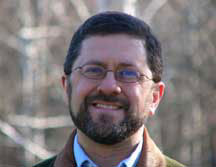 Mothers of the Church”.  From the well known Sts. Perpetua and Felicity and St. Monica to lesser known “mothers” like Proba the Poet and St. Olympias, Mike, along with his co-author Christopher Bailey, share their inspiring stories.  Mike Aquilina’s sincere love for these women and the witness they have provided us in our present age helps us to appreciate, once again, what God can do with ordinary people who are open to His extraordinary grace.
Mothers of the Church”.  From the well known Sts. Perpetua and Felicity and St. Monica to lesser known “mothers” like Proba the Poet and St. Olympias, Mike, along with his co-author Christopher Bailey, share their inspiring stories.  Mike Aquilina’s sincere love for these women and the witness they have provided us in our present age helps us to appreciate, once again, what God can do with ordinary people who are open to His extraordinary grace.
[powerpress]
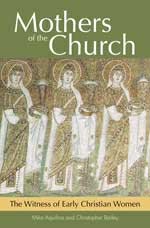 You can find Mike’s book here
You can find Mike’s book here
The Mothers of the Church include:
Holy Women of the New Testament
–St. Blandina
–St. Perpetua and St. Felicity
–St. Helena
–St. Thecla
–St. Agnes of Rome
–St. Macrina
–Proba the Widow
–St. Marcella
–St. Paula
–St. Eustochium
–St. Monica
–Egeria the Tourist
Tags: catholic, catholic podcast, catholic prayer, cathollc spirituality, Church, fathers of the church, mike aquilina, mothers of the church, osv, perpetua, st. paul center for biblical theology, witness
This entry was posted on Friday, June 8th, 2012 at 11:40 am
You can follow any responses to this entry through the RSS 2.0 feed.
USCCA12- Episode 12-Â Â Mary: Â The Church’s First and Most Perfect Member
[powerpress]
Archbishop Lucas offers insights on the US Catholic Catechism for Adults Chapter 12:
The Second Vatican Council remains us that Mary is a member of the Church who “occupies a place in the Church which is the highest after Christ and also closest to us” (LG, no. 54).  She is the first and the greatest of all the disciples of Christ.
The Most Reverend George J. Lucas leads the Archdiocese of Omaha.Â
For other episodes in the visit our Archbishop George Lucas page
This programs is based on:
More information can be found here.
We wish to thank the USCCB for the permissions granted for use of  relevant material used in this series.
Also we wish to thank Fr. Ryan Lewis   for his vocal talents in this episode.
Tags: Archbishop Lucas, blessed virgin mary, catholic, catholic podcast, catholic prayer, cathollc spirituality, Church, Church's First, George Lucas, LG, united states catechism of the catholic church, USCCB
This entry was posted on Monday, May 21st, 2012 at 6:22 am
You can follow any responses to this entry through the RSS 2.0 feed.
[powerpress = “Vatican_Radio”]
While the rest of the world was seething with the war and its evils in a lonely corner of Europe 1917 three young children had a vision of Our Lady.That apparition sparked off the devotion to Our Lady of Fatima, an inspiration for millions to work and
pray for peace.
Since that time not only have millions prayed the Rosary and done penance but have made the pilgrimage to Fatima.
Among these Blessed John Paul II who shortly after his visit there during the Jubilee Year, in the presence of the statue representing Our Lady of Fatima entrusted the third millennium to her immaculate heart.
Monsignor Philip Whitmore brings us the hymn the crowds sang on that occasion. One which tells the story of those three young shepherd children….
A programme produced by Veronica Scarisbrick.
Tags: catholic, catholic podcast, catholic prayer, cathollc spirituality, children, Europe, Monsignor Philip Whitmore, vatican radio, work
This entry was posted on Friday, May 11th, 2012 at 7:48 am
You can follow any responses to this entry through the RSS 2.0 feed.

